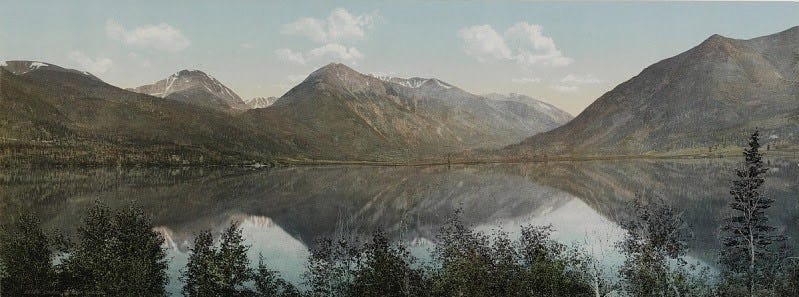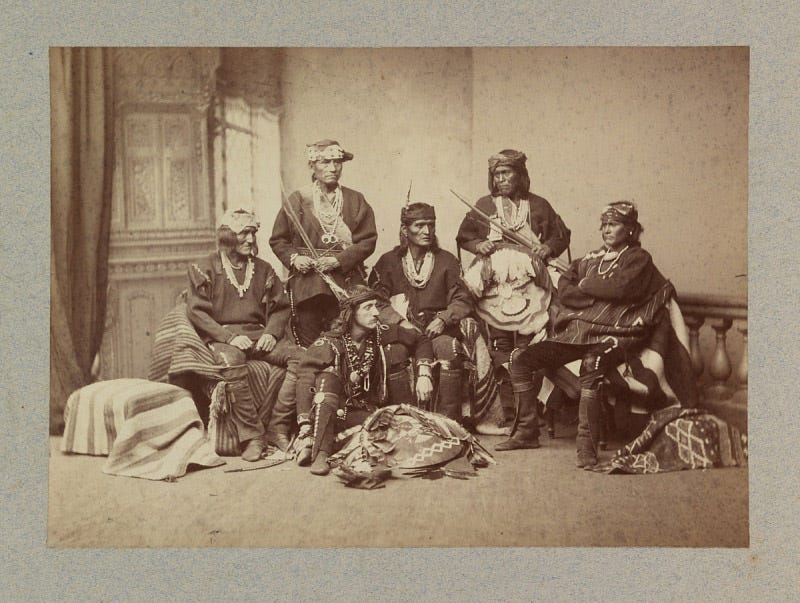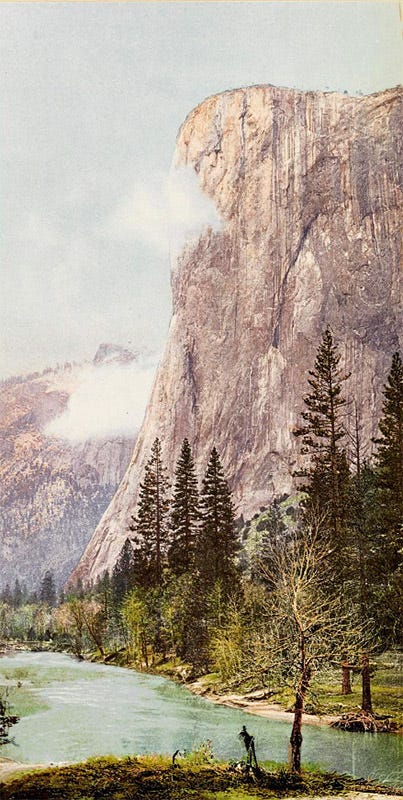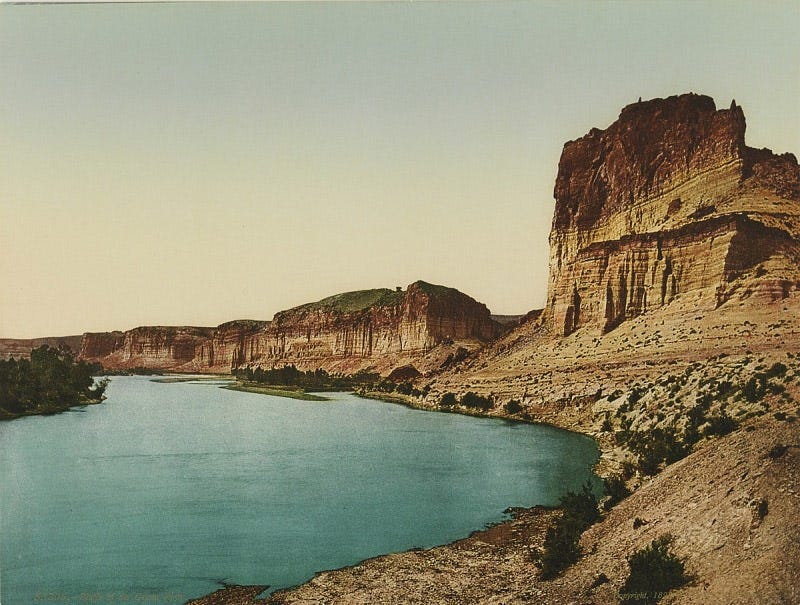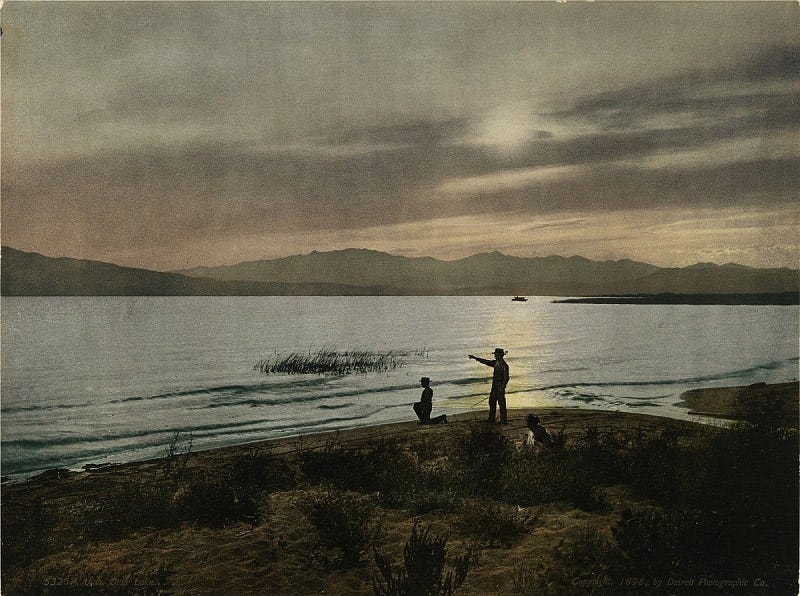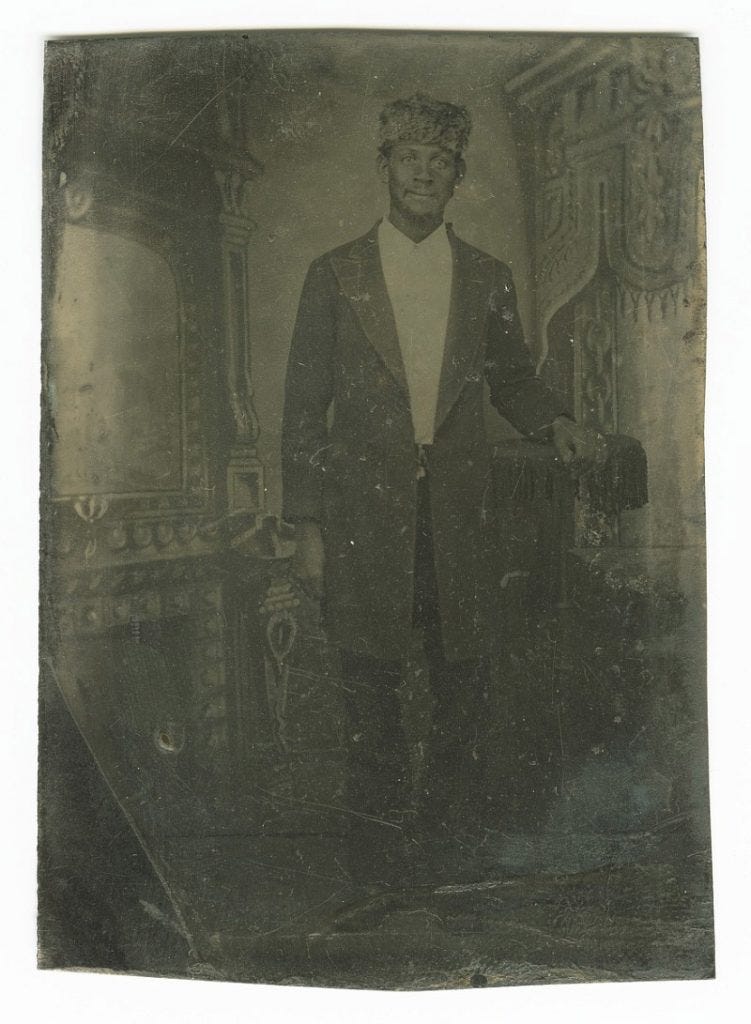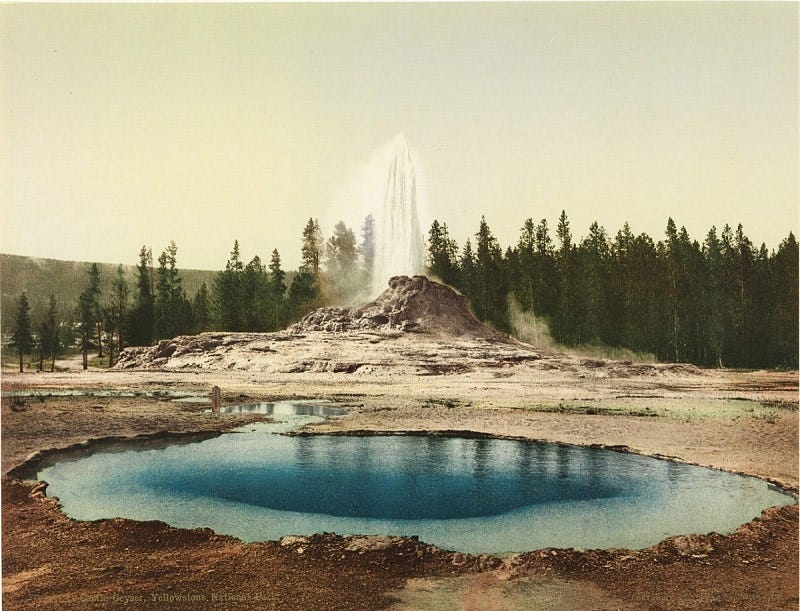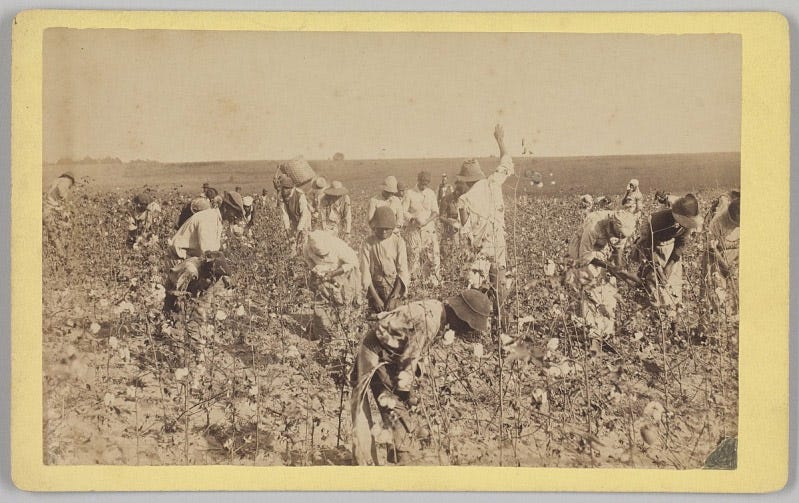10 Epic Photos from the 1800s
Did you know that the first photograph was almost lost forever? It was taken by Nicéphore Niépce in a commune in France called Saint-Loup-de-Varennes somewhere between 1826 and 1827.
Back then, photos were taken on film and the process to develop them was much harder. But it led to some magical, and truly epic photos.
In this article, I am going to break down ten epic photos from the 1800s. These are some of my favorite historical photos and I want to share a bit of the story behind each one. Keep reading along if you’re curious about the history of photography and some of the earliest pictures!
1. Colorado, The Upper Twin Lake
Photo: Smithsonian
A beautiful landscape of the Upper Twin Lake in Colorado. This photo was from the Detroit Photo Company, but the individual photographer is unidentified. It was taken around 1898 and is currently a part of the Smithsonian American Art Museum and its Renwick Gallery.
2. Frank Hamilton Cushing with Laiyuahtsailunkya, Naiyutchi, Palowahtiwa, Kiasiwa, and Nanake
Photo: Smithsonian
Frank Hamilton Cushing was an American anthropologist and ethnologist. His focus was on the study of the Zuni Indians in New Mexico. He worked to enter their culture and truly understand it. In doing so he helped establish participant observation as a common practice for future anthropologists.
This albumen silver print photo from 1882 shows Cushing with the various leaders including Laiyuahtsailunkya, Naiyutchi, Palowahtiwa, Kiasiwa, and Nanake.
3. El Capitan, Yosemite Valley
Photo: Smithsonian
The famous El Capitan peak in Yosemite Valley. Captured over 100 years ago at the end of the 1800s by a member of the Detroit Photo Company. Imagine being one of the first people to capture a photo of this majestic site! I bet they couldn’t wait to develop this. Similar to many other photos from the 1800s, this was done through a chromolithographic process.
4. Bluffs of the Green River
Photo: Smithsonian
Taken in 1892, this photo is credited to the Detroit Photo Company. Showing the beautiful green river in all of its glory, well over a century ago. This landscape photo is a chromolithograph, which was a unique method for making multi-colored prints that stemmed from the process of lithography.
5. The Sphynx, Apostle Islands, Lake Superior
Photo: Smithsonian
Another stunning photograph from the Detroit Photographie Company. This photo was taken at the Apostle Islands on Lake Superior in Michigan showing the gorgeous rock formations in the water.
Captured in 1898, this is another chromolithograph. Unfortunately, similar to many other photos from the time, this artist is unidentified.
6. Utah, Utah Lake
Photo: Smithsonian
Sunset silhouettes. This epic photo from 1898 depicts a group looking out over the water at Utak Lake as the sun lowers behind the clouds. There isn’t much other info included with the photo, but it really makes you wonder about these people.
What were they doing? Where were they going? I am continuously fascinated imagining the journeys of the people seen in these historical photos. What do you think they were looking at?
7. Charles T. Parsloe, Jr.
Photo: Smithsonian
This is probably the most playful portrait I could find from the 1800s and it features the performer Charles T. Parsloe, Jr. Based on this image you can probably tell he was a funny guy and performed various skits. In other similar photos, you can find Charles smiling and doing comedic skits. Even in the 1860s people were trolling and joking around!
This photo was made using glass plate collodion negative. This is the process of coating a clean glass plate with collodion to develop the photo.
Video on wet collodion negative process:
8. Tintype portrait of a man wearing a fur hat
Photo: Smithsonian
A fascinating tintype portrait of a man from the late 1800s. From the credit line: ‘This tintype depicts an image of a man wearing a fur hat. The man is standing with his left arm resting on a highball table. He is wearing a long jacket with lapels, a collard shirt, pants, shoes and a fur hat. He is looking directly at the camera. The backdrop behind him features an illustration of ornate curtains and a fireplace. There are no inscriptions, front or back.’
9. Castle Geyser, Yellowstone
Photo: Smithsonian
A Detroit Photo Company collection photography from 1898 of the castle geyser in Yellowstone National Park. Captured as a chromolithograph, this beautiful photo is rich in colors showing the warm sun, the beautiful blue water, and the forest behind the geyser.
10. No. 19, Cotton Picking
Photo: Smithsonian
Not all photos from the 1800s are landscapes and military portraits. Some depicted the harsh and painful realities of America during slavery. This is an albumen print from the late 1800s showing a group of unidentified men, women, and children picking cotton in a field. ‘The landscape behind the cotton field is barren, with a grove of trees in the far left distance. Most of the people are bent over picking, though some are standing upright and one person in the left background has a large basket hoisted onto their left shoulder. The print is mounted on a pale yellow card mount that is gray on the reverse. The title and photographer name are printed and handwritten in black ink on the reverse.’
This photo was taken by American photographer A. W. Möller and is in the Collection of the Smithsonian National Museum of African American History and Culture, Gift from the Liljenquist Family Collection
This post was written by Mike Moloney
Mike Moloney is the founder of FilterGrade and a photographer and filmmaker. He enjoys traveling, camping, hiking, and exploring. See more about Mike on Instagram and Twitter.


